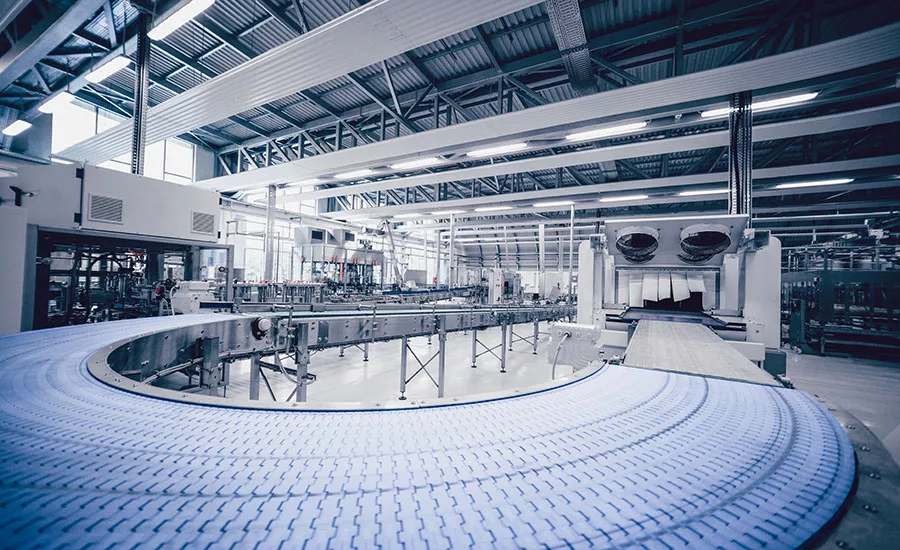Understanding NSF Certification and How it Can Benefit Food Equipment Manufacturers

AleksandarGeorgiev/E+ via Getty Images
In food processing and service environments, hygienic equipment design is critical to food safety. Insanitary equipment design is one of the most common causes of food contamination, resulting in foodborne illnesses and outbreaks. Poorly designed equipment may have difficult-to-clean areas, which could lead to sanitation issues. The equipment might also be constructed of materials that leach harmful compounds into the food, resulting in food contamination.
As food processors and service operators have a social obligation to protect public health, they prefer to invest in equipment that is hygienically designed and meets food safety standards—i.e., equipment that can be cleaned to a microbiological level and is made of food-grade materials. Given this preference, National Sanitation Foundation Institute (NSF) certification is essential for food equipment manufacturers in order for their products to be accepted in the food processing and service industry.
Benefits of NSF Certification
NSF certification benefits food equipment manufacturers in a variety of ways. The National Sanitation Foundation Institute is a sanitation and safety authority that certifies food equipment that is hygienically designed and built in accordance with U.S. Food and Drug Administration (FDA) food safety and environmental health standards. This nonprofit organization was founded in 1944 at the University of Michigan's School of Public Health with the mission of providing the safest and most hygienically designed food industry equipment that meets food safety and environmental health standards. NSF has developed standards for a wide range of food handling equipment, including food preparation and dispensing equipment, ice makers, refrigerators and freezers, dishwashing sinks, vending machines, mobile food carts, and service counters. Before certifying equipment, NSF evaluates the equipment’s design and construction for ease of cleaning and inspection, the use of food-grade materials in its construction, and the performance of the equipment (depending on the equipment and its intended application).
NSF certification provides many benefits to food equipment manufacturers. When equipment manufacturers have NSF certification, their clients, such as food processors and service operators, can be confident they are investing in the right equipment and working with a manufacturer that adheres to food safety standards. Obtaining NSF certification increases the value of a brand since it demonstrates that the manufacturer is committed to supplying safe and high-quality food equipment to the foodservice industry. As a result, the brand is perceived to be more client-focused. Equipment manufacturers may benefit from improved customer perception and increased brand trust, resulting in improved business-to-business (B2B) partnerships. Another benefit for equipment manufacturers is that if they are in the business of exporting food equipment to multiple countries, then they do not need to obtain multiple equipment certifications for each country to which the equipment is exported. NSF certification is widely recognized and accepted by regulatory bodies worldwide. Also, NSF assigns a dedicated NSF representative to the manufacturer throughout the certification process, making the certification process simple.
NSF certification benefits not only food equipment manufacturers, but also foodservice operators. Since NSF-certified equipment is easily cleanable, it saves foodservice operators time and labor while also helping avoid food safety violations caused by sanitation issues. It also helps keep environments sanitary, resulting in a higher level of hygiene and better audit scores. Foodservice establishments that use NSF-certified equipment will benefit greatly during public health inspections because public health inspectors prefer NSF-certified equipment in foodservice establishments.
Considerations for NSF Certification
Looking for quick answers on food safety topics?
Try Ask FSM, our new smart AI search tool.
Ask FSM →
NSF analyzes four major factors for certifying food equipment: (1) the design of the equipment, (2) its construction and fabrication, (3) the materials used in construction, and (4) the performance of the equipment, such as its ability to hold food at prescribed safe food temperatures. NSF has classified different areas of the equipment into zones based on their contact and exposure to food and has established standards for how those zones can be designed and constructed. Different types of food handling and serving equipment have different certification criteria. Traditionally, NSF has divided all parts of the equipment into four zones: Food Zone, Splash Zone, Non-Food Zone, and Unexposed Non-Food Zone. The standards for design and construction vary depending on the equipment, zone, and intended usage.
Food Zones have the strictest certification requirements. It includes surfaces or areas that come into direct contact with food, as well as surfaces from where food may drip, drain, or splash back onto surfaces that are in direct contact with food. These areas must be designed in such a way that they are easy to access and clean without use of tools, such as screwdrivers. All parts and surfaces in Food Zones also must be easily cleaned and sanitized, with no hidden corners or blind spots. Fasteners are not permitted in the food zone, even if they are easily cleaned. Seams are allowed, but they must be well sealed and easy to clean. Fixtures and materials used in Food Zone areas must be corrosion-resistant, smooth, cleanable, and toxicologically safe, as defined by FDA food safety standards (for example, free of lead, cadmium, etc.).
Splash Zones are areas or surfaces that do not come into direct contact with food, yet become soiled due to spills and splashes when equipment is in use. To be certified, these fixtures must be easily accessible and cleanable, as well as able to withstand washing with a high-pressure washer hose.
Non-Food Zones are neither in the Food Zone nor in the Splash Zone. Non-Food Zones include areas or surfaces that do not come into direct contact with food; i.e., are not exposed to food or food spills.
Finally, Unexposed Non-Food Zones include enclosed areas for equipment repairs and maintenance that are accessible through coverings, lids, and panels.
NSF, which has a global presence, has authorized third-party certification bodies to test and certify equipment manufacturers on its behalf. The equipment certification process comprises a series of steps, listed below.
Submitting Application and Identifying the Scope
The scope of certification is decided in the initial step of the certification process. The equipment manufacturer must contact the NSF local office and provide information about the equipment, such as its specification and the intended use. The manufacturer will then be informed of the scope of the certification, as well as the certification fee. Once an agreement is reached, the NSF will begin the certification process.
Material, Technical, and Design Review
The design, construction, and performance of the equipment are evaluated at this stage. The materials used in the food and non-food contact surfaces of the equipment are evaluated to determine if they are food grade and meet other food safety standards. The performance of the equipment, as well as the ease of cleaning, inspection, and repair, as well as assembly and disassembly, are assessed. The zones in the equipment, such as the Food Zone, Non-Food Zone, Splash Zone and Unexposed Non-Food Zone, are evaluated against the NSF zone standards. Food Zones have the most stringent requirements. It is then determined whether Food Zone surfaces are made of food-grade materials, how easy it is to disassemble parts for cleaning and inspections with or without tools, and whether any difficult-to-clean corners or crevices are present.
One of the requirements is that no fasteners be used in Food Zones and that fasteners used in Non-Food Zones and Splash Zones be easily cleanable and securely fastened to the surface. If there are any permanent joints in the Food Zone or Splash Zone, they must be well sealed and have a smoother finish to prevent food debris from becoming trapped and contaminating food via direct contact. In the Splash Zone and Non-Food Zone, it must be determined whether any fasteners or belts could trap food debris and make cleaning difficult, as well as whether the equipment has enough clearance underneath for cleaning access. If noncompliance with NSF standards is found, then manufacturers may be asked to change the design and construction of the equipment. The equipment is tested at either an NSF facility or the manufacturing site, which is especially important in events where moving equipment is difficult.
Facility Inspection and Certification
At this point, NSF audits the facility of the equipment manufacturer. If the audit is successful, then NSF certifies the equipment and lists it on the NSF website. The manufacturer will then be able to use the NSF mark on the equipment. In the event of noncompliance, NSF will also work with the manufacturer to develop corrective actions. Noncompliance resolution frequently takes time and causes a bottleneck in the certification process. It is recommended to seek NSF guidance during the design and development of the equipment. This will help save a significant amount of time, effort, and money.
Annual Onsite Inspection and Monitoring
To maintain NSF certification, the equipment manufacturer must demonstrate adherence to NSF standards. NSF performs yearly onsite audits of the manufacturing plant and regularly tests and inspects equipment to ensure that the manufacturer complies with all standards in equipment design, construction, and performance and uses only approved raw materials. If any violations are discovered, NSF has the authority to take action and withdraw certification.
In addition to certification, NSF invests extensively in training and development, which helps equipment manufacturers with equipment design and development. NSF also hosts workshops and seminars for equipment manufacturers to provide training on equipment hygienic design standards and country-specific food safety regulations.
NSF certification is a sanitation certification for commercial food equipment that ensures that equipment design and construction meets stringent food safety and environmental health standards. NSF certification can help food equipment manufacturers fulfil their social responsibility to protect public health by providing the safest food equipment to the foodservice, retail, and processing industries, ensuring food safety throughout the food supply chain. Food safety is, without a doubt, a shared responsibility of all stakeholders in the food supply chain. Food equipment manufacturers, as a key supply chain stakeholder, are well aware of their role in ensuring food safety, as well as the importance of providing safe food to the general public—this is why food-safety-minded equipment manufacturers seek NSF certification.









